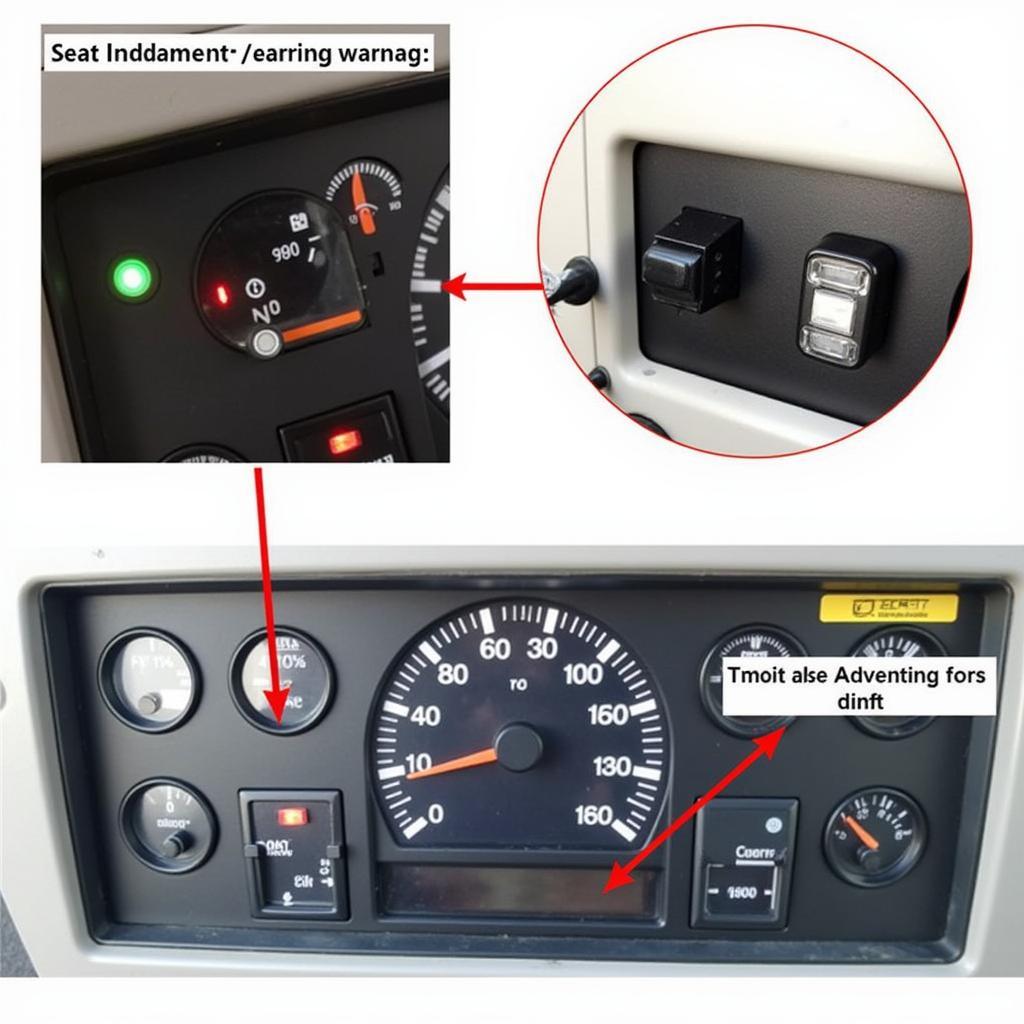Understanding how to properly use and maintain the warn winch on your two-seat side-by-side is essential for safe and enjoyable off-road adventures. A warn winch is an invaluable tool for extricating your vehicle from challenging situations, but a malfunctioning winch can quickly turn a fun outing into a frustrating ordeal. This comprehensive guide will delve into the intricacies of warn winch systems specifically designed for two-seat side-by-sides, equipping you with the knowledge to troubleshoot issues and ensure optimal performance.
Understanding Common Warn Winch Issues
Before we dive into troubleshooting, it’s helpful to understand some common problems that can arise with your warn winch:
- Electrical Problems: These can range from dead batteries and blown fuses to loose wiring and faulty solenoids.
- Motor Problems: A warn winch motor can overheat or burn out due to overloading or prolonged use.
- Gear Train Issues: Worn or damaged gears can prevent the winch from spooling in or out correctly.
- Remote Control Malfunctions: Problems with the remote control’s signal transmission can render the winch inoperable.
Troubleshooting Your Warn Winch
When your warn winch isn’t cooperating, systematic troubleshooting can help pinpoint the culprit:
- Check the Battery: Ensure your side-by-side’s battery is fully charged. A weak battery is a common cause of winch failure.
- Inspect the Fuses: Locate the inline fuse for your warn winch and check if it’s blown. Replace it with a fuse of the same amperage if necessary.
- Examine the Wiring: Carefully trace the wiring from the battery to the winch, looking for any loose connections, corrosion, or damage. Tighten connections and repair or replace damaged wires as needed.
- Test the Remote Control: Make sure the remote control’s batteries are fresh and that the signal is reaching the winch.
- Listen to the Motor: When you activate the winch, listen for any unusual noises from the motor, such as grinding or clicking. This could indicate a motor or gear train issue.
Remote Software Diagnostics and Programming
Advancements in automotive technology have brought remote diagnostics and programming to the forefront of vehicle repair and maintenance. For owners of late-model two-seat side-by-sides equipped with compatible warn winch systems, remote software solutions offer a new level of convenience and efficiency in addressing winch-related issues.
- Identifying Fault Codes: Remote diagnostics can read diagnostic trouble codes (DTCs) stored in the winch’s electronic control unit (ECU), providing valuable insights into the nature of the problem.
- Software Updates and Calibration: Manufacturers frequently release software updates that improve winch performance, address known issues, and enhance compatibility with other vehicle systems.
- Parameter Adjustments: Remote programming allows technicians to fine-tune specific winch parameters, such as line speed and pull ratings, to optimize performance based on individual needs and driving conditions.
When to Seek Professional Help
While some warn winch issues can be resolved with basic troubleshooting, it’s essential to recognize when professional help is necessary:
- You’ve exhausted basic troubleshooting steps, and the problem persists.
- You suspect a serious mechanical issue with the motor or gear train.
- You’re uncomfortable working with electrical components.
“Attempting to repair a complex system like a warn winch without the proper knowledge and tools can lead to further damage or even injury,” cautions John Anderson, a certified automotive electrician with over 20 years of experience. “It’s always best to err on the side of caution and consult a qualified technician when in doubt.”
Preventative Maintenance: Keeping Your Warn Winch in Top Shape
Preventative maintenance is key to extending the lifespan of your warn winch and minimizing the likelihood of encountering issues on the trail:
- Regular Inspection: Inspect your winch regularly for any signs of damage, corrosion, or wear and tear.
- Keep it Clean: After each off-road excursion, clean your winch to remove dirt, mud, and debris.
- Lubricate Moving Parts: Apply a light coating of marine-grade grease to the winch’s moving parts, such as the gears and cable drum, to prevent rust and corrosion.
- Spool the Cable Properly: When respooling the winch cable, ensure it winds evenly onto the drum.
Conclusion
A warn winch is an indispensable asset for any off-road enthusiast with a two-seat side-by-side. By understanding the common issues that can arise, following proper troubleshooting techniques, and embracing preventative maintenance practices, you can keep your warn winch operating at peak performance for years to come. Remember, safety should always be your top priority. If you encounter a problem that you can’t resolve, don’t hesitate to seek professional assistance from a qualified technician.

